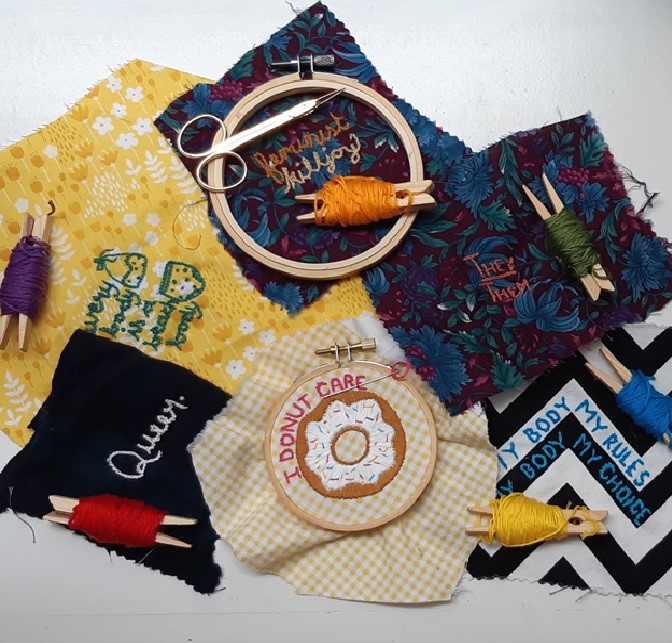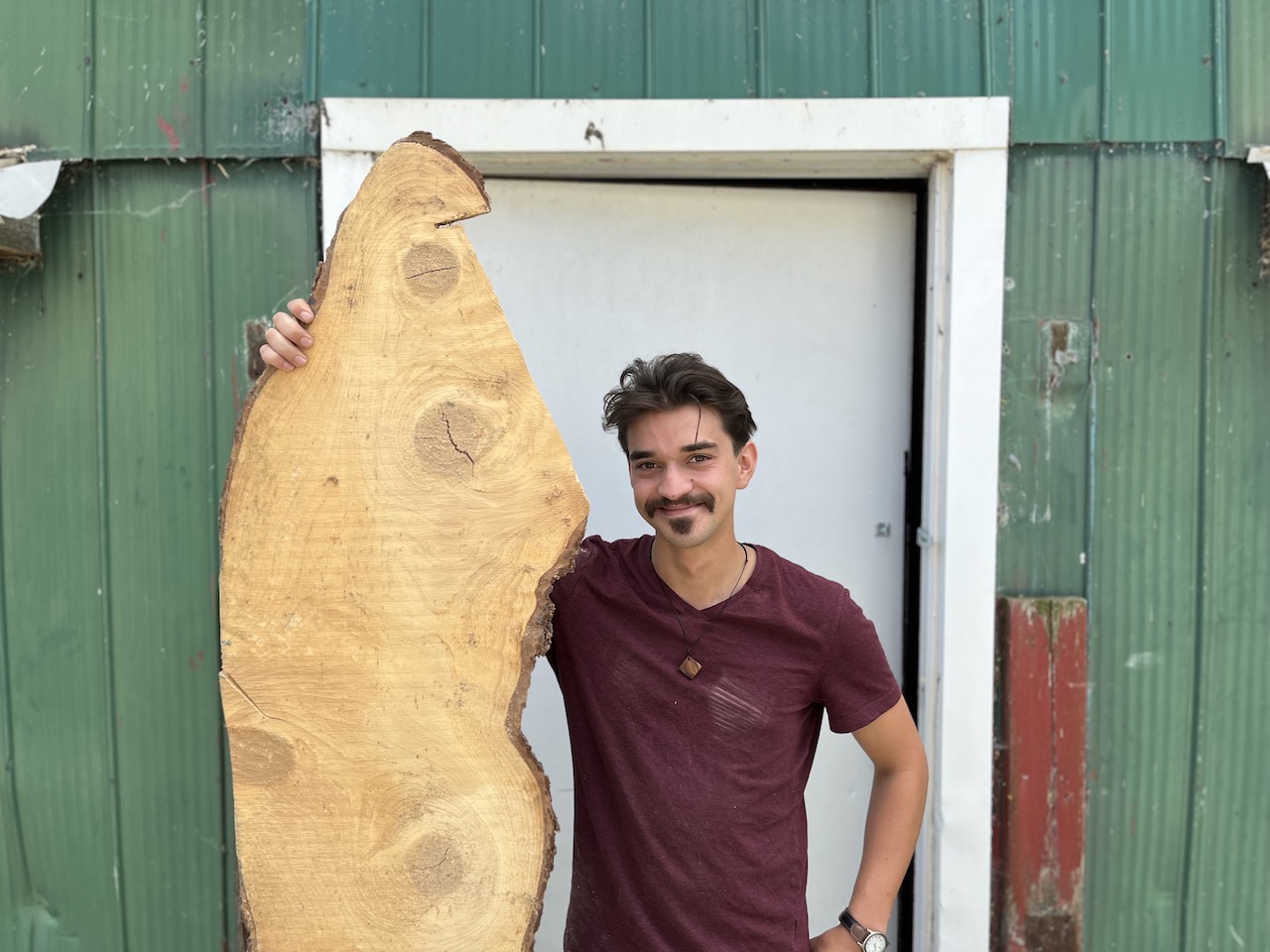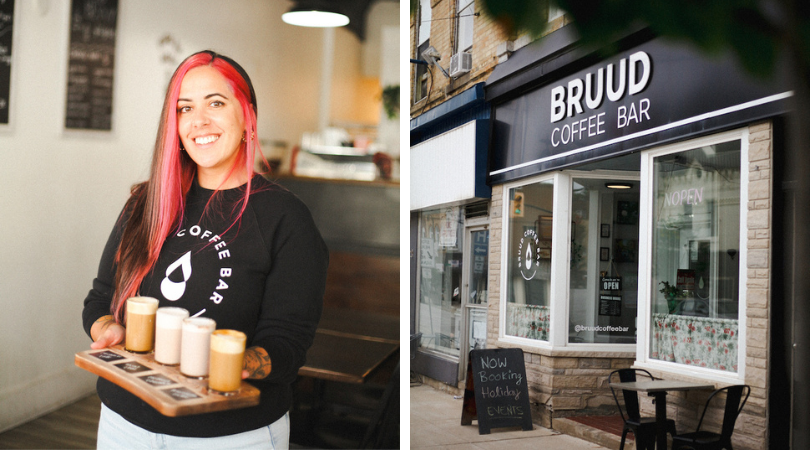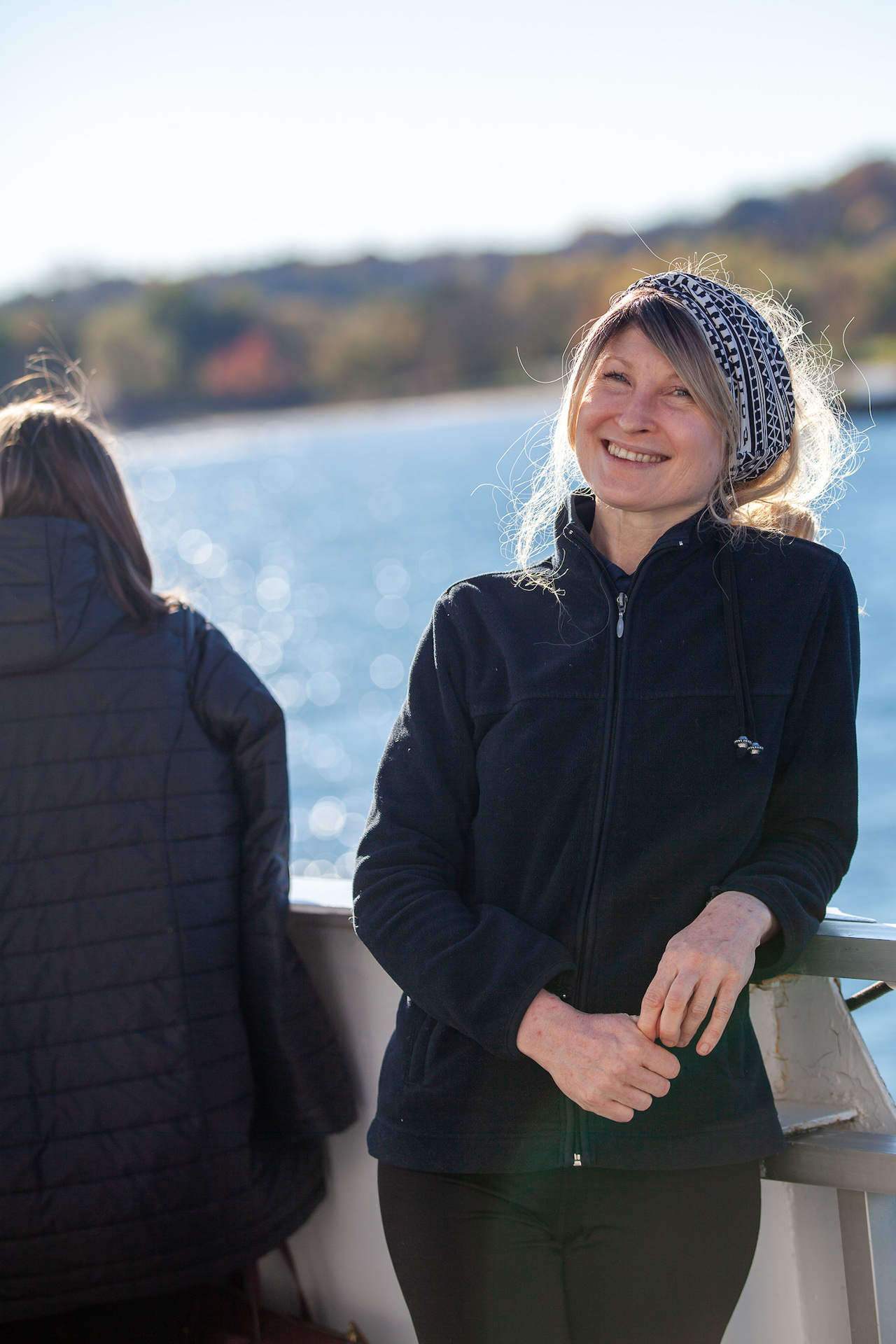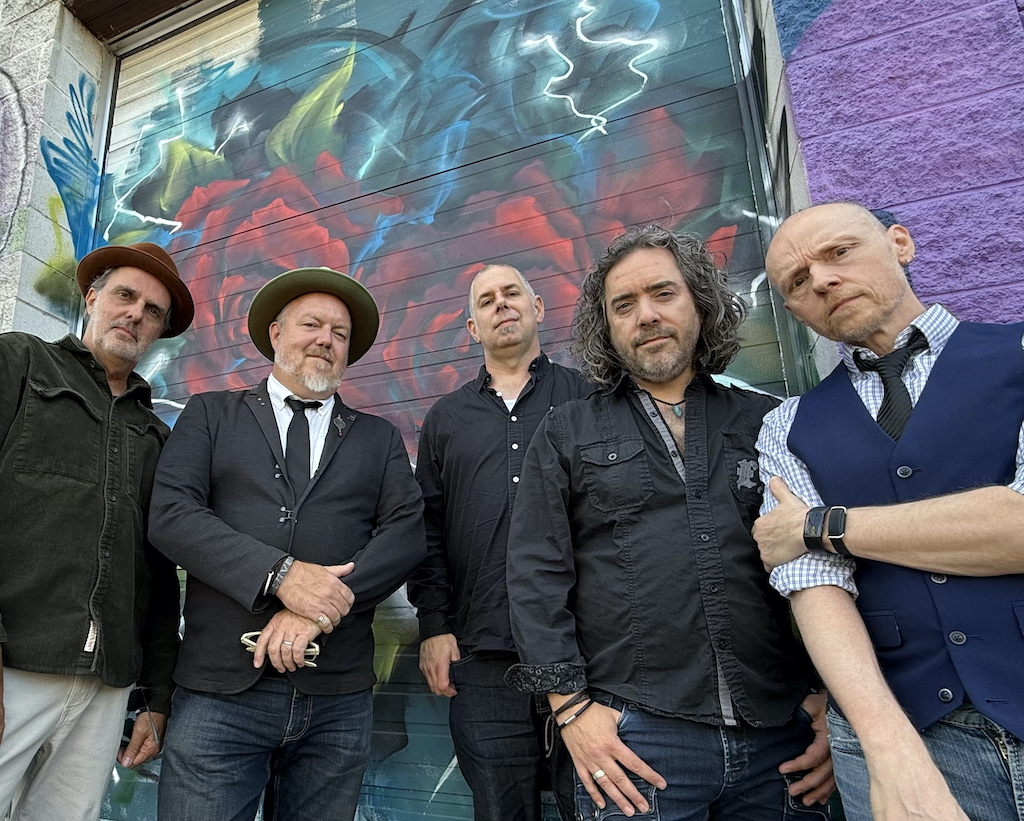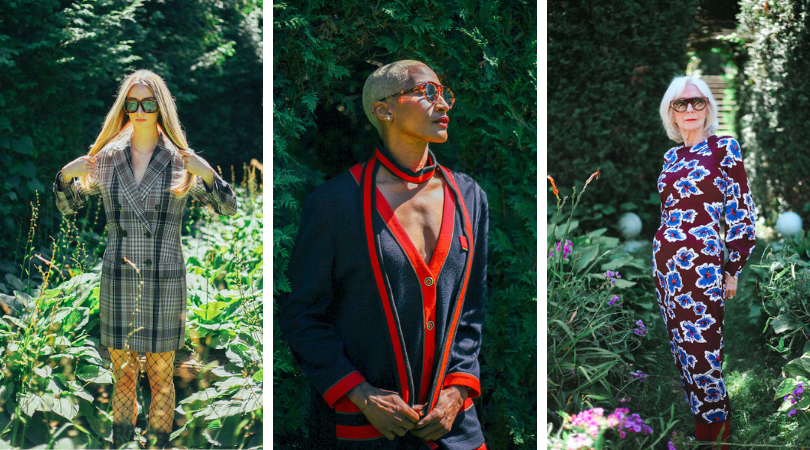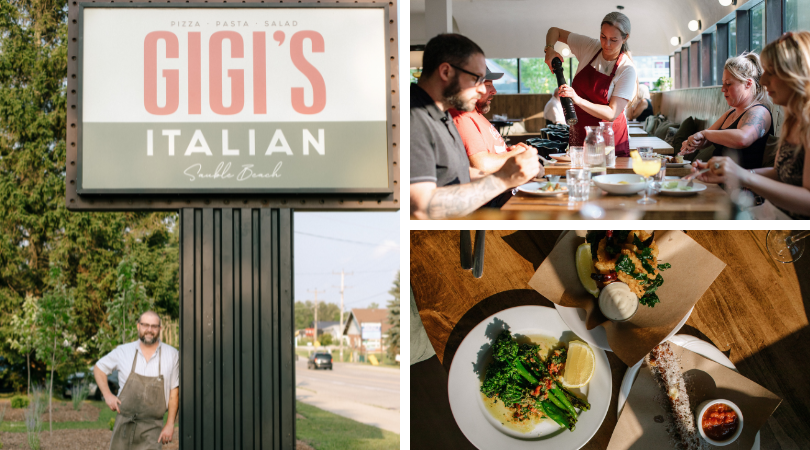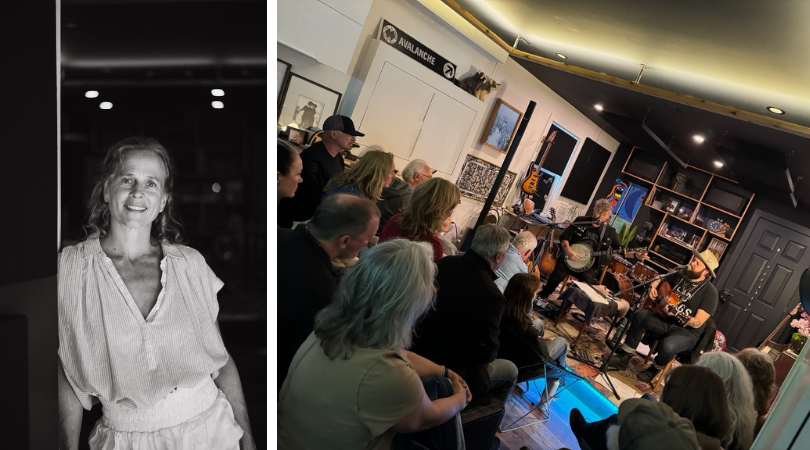A bit back a friend approached me about an idea for an event. A concept that I didn’t really know much about, but the notion intrigued me: Craftivism. I wondered how this pun-rific marriage of ‘craft’ and ‘activism’ could really work?
I agreed without knowing much, but soon dived right in, gathering intel from the depths of the internet, piecing together all the bits I could. I wanted to shape an event that was well informed and tailored to the community needs. I wanted to satisfy my new accomplice’s vision, and create something I could feel confident about.
As I dug deeper, I discovered lots of manifestos, organizations, articles, and ample pinterest boards which explained why so many people are on getting on board with the ‘gentle protest’.
Craftivism is described as a thoughtful and mindful approach to activism. It’s the marriage of art and action while remaining in the moment and leaving time to process your art.
One of the most positive discoveries I have found about Craftivism is it’s accessibility of activism for everyone. For all body types, identities, skill levels, and for those who would find ‘regular’ types of activism inaccessible due to mental or physical health, location, and/or financial restrictions. It’s a type of activism which has the ability to reach out to anyone and everyone.
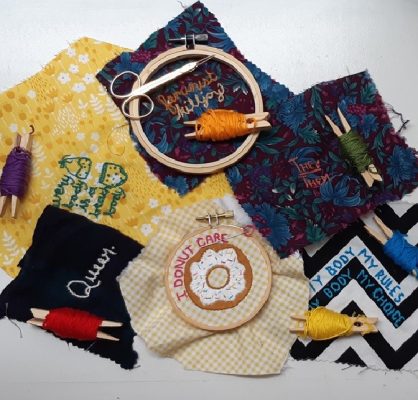
Much of craftivism has a strong relationship with environmentalism! Upcycling and sustainable sourcing of materials and doing crafts which directly make commentary on the environment such as knit gardening, upcycled clothing, or crocheted nests.
One of my personal favourite aspects of craftivism is its ability to create commentary on capitalism. This also comes hand-in-hand with its ability to have a close relationship with environmentalism. Sourcing your materials in a certain manner and the art you produce in itself creates a statement. For a lot of people this comes back to necessity/accessibility, specifically as craft historically predates capitalist production and was created based upon a need basis rather than as a commodity. The whole DIY movement along with awareness of textile slavery has brought about a lot of conversation, demand, and some change on how we source.
A major point about craftivism is, in fact, its history. The ‘domestic arts’ is one that is also rooted in that of the ‘feminine’. Historically speaking, fiber art was not gendered, but in recent history, it had become female connotated due to its ‘recent’ associations with domestication and ‘pursuits of the home’. As a result, some people and self identified feminists see craft art with that (negative) connotation and specifically of female oppression. But nowadays, there is a more ‘reclaiming’ of ‘domestic craft’ from that connotation of the women’s work, specifically in combination with activism to bring about awareness, artistic freedom, and statement with feminist, queer, and more generally diverse perspectives.
Before being approached for this event, I started tinkering away at some of my own ideas which were born out of my bicycle adventures around town last summer. I really enjoy street art (but obviously the debate of vandalism has its own conversations). I was more focusing on an artistic expression I could contribute to the community and during this research it started to mould. By the end it had a name: ‘Guerilla Kindness’ (which later on I found I did not in fact come up with, there’s already a book. Check it out).
But it was a brilliant revelation/discovery of another subsect of craftivism: understanding the impact of small actions, of finding ways of giving when you don’t have much. Little creations, actions, pass-it-alongs which can go beyond that of craft with the intent to share in the good, positivity, and love of humanity. If this all sounds interesting, I’ve got an event for you….
I’m showing stuff off at our Craftivism event on April 27 at the Owen Sound library. Ya shameful plugging right now. I did it. But you can also use google or ask me in another context 😛
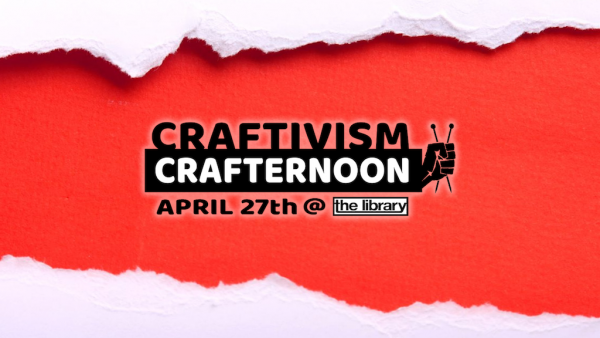
Now not everything’s perfect. There are a few things we need to discuss. The major criticism of craftivism is its passive or inactive activism. Would all art be considered inactive then? Does being involved with craftivism mean one is exclusively involved with one type of activism? And I believe there are some types of craftivism which are indeed not effective just like there are other types of activism which are also not successful. This is not a one-off answerable thing and I believe a dismissive critique, however is definitely something to keep in mind when being socially/politically active in any way.
Next we have to delve into the craft culture in general, of which I am fully immersed. I have been working with craft beer for roughly six years, I wear 90% charity/thrift shop clothing (which I then repair or alter myself), my furniture is salvaged or inherited, I garden organically, I make or salvage a lot of my child’s toys, etc. Some of that was born out of not having money at times in my life, but I do now spend more than I should on artisanal foods, succulents, and the high-quality art supplies that I never thought I’d pay for.
This juxtaposition of experiencing both genuine poverty and ‘luxury’ is (particularly now) quite common among many, which in itself is a very long complicated thing. However, most concerns rise out of the institutions, businesses, or corporations which are facilitating the craft movement.
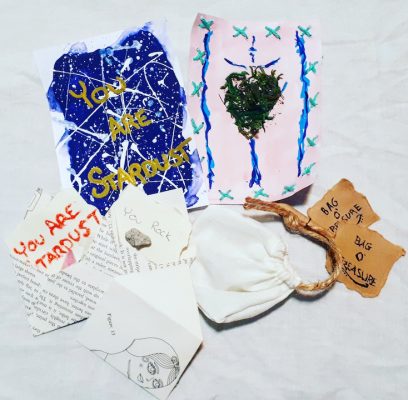
To cut to the chase, the craft culture is one that has exploited the histories and experiences of the poor and people of colour, in particular. Craft(s) have a loooonnggg history which flip flops between the privileged and the disadvantaged and vary among cultures. However a great deal of of our recent westernized history associates that of the home-made, hand-crafted, or handicraft with the rural, the traditional, the minimal, and the overall idolization of poverty. It’s complicated. I could go on longer. But I will hand it over to the professionals and attach resources instead.
Lastly. There are a lot of genital crafts out there. I for one have always been one to vulva everything, because we have been conditioned to shame that particular body part. It is deeply necessary to normalize the body bits we all have/had since the beginning of time because it’s perfectly normal, and there has been a disproportionate amount of attention given to the phallus than that to the yoni for a rather long time. I adore vulva/vagina, uterus, ovaries motifs, patterns, designs, etc. that a lot of peeps have been getting on with. However, this is frequently with the narrative of ‘women’s bodies’. The issue here is not all women have a vulva, uterus, fallopian tubes, ovaries, etc. Fact number one: with the understanding that exclusion of the penis from the perspective of, in particular, a female but of also a male owner, is exclusion. Number two: there are cis-women who also do not have these (traditional ‘female’ reproductive) body bits. There are also intersex people. There are diverse sexes, genders, people out there. Genital equality for all!
Phew. That’s just a bit. Craftivism is beautiful, complex monster. There’s so much more. Good thing I’m running an event at the library with resources and tools and conversations and tea!! Join me and some friends to create and demonstrate about whatever you feel is important. We will be coming together as individuals as well as a community creating pieces; contribute in whatever way you feel comfortable. April 27th 2019, 1-5 pm at the Owen Sound and North Grey Public Library Auditorium, pay as you can.’
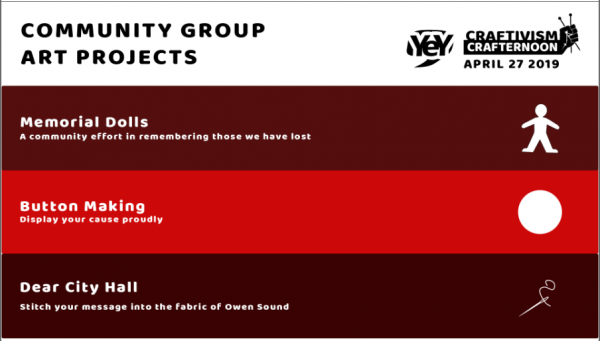
Additional Reading:
The White Lies of Craft Culture by Lauren Michele Jackson, April 17 2017, https://www.eater.com/2017/8/17/16146164/the-whiteness-of-artisanal-food-craft-culture
An Open Letter to the Craftivism Movement by Julia Feliz August 23 2017 https://medium.com/@jd.feliz/an-open-letter-to-the-craftivism-movement-816ccb285b0
There Are Almost No Black People Brewing Craft Beer. Here’s Why. by Dave Infante December 3 2015 https://www.thrillist.com/drink/nation/there-are-almost-no-black-people-brewing-craft-beer-heres-why
Written by Skye Cormier
Originally posted in ‘Our Voice’, a monthly blog series from the youth of Grey and Bruce counties, brought to you by Youth Elevating Youth.

